In many industries — from 석유와 가스 to power generation and water treatment — pumps and compressors work non-stop under harsh conditions.
Inside these machines, bushings play a small but critical role: they support rotating shafts, reduce friction, and maintain alignment.
Among all materials used for bushings, tungsten carbide stands out for its exceptional 내마모성, 경도, and dimensional stability.
Its unique combination of mechanical and chemical properties allows pumps and compressors to run longer, with fewer breakdowns and lower maintenance costs.
This article explores the key applications of tungsten carbide bushings in pumps and compressors, explaining why this material is preferred for high-performance, high-reliability machinery.
Why Tungsten Carbide Bushings Are Used in Pumps and Compressors
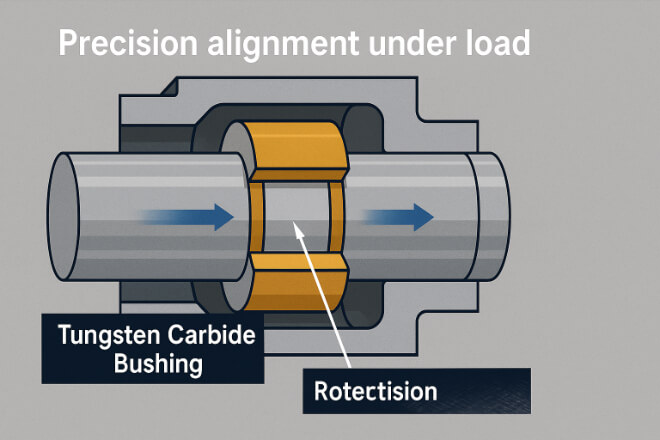
Tungsten carbide (WC) is a compound made of tungsten and carbon atoms bonded together, usually with a small amount of metallic binder such as cobalt or nickel.
This material combines metallic strength with ceramic 경도, making it ideal for moving parts that face constant friction, pressure, and fluid flow.
In pumps and compressors, tungsten carbide bushings:
Support rotating shafts and impellers
Maintain precise alignment under load
Resist wear caused by sand, particles, or slurry
Withstand high pressures and temperatures
Prevent shaft vibration and leakage
In short, these bushings act as the foundation of reliability in rotating systems.
Key Performance Advantages
| 재산 | 설명 | Impact on Equipment |
|---|---|---|
| Hardness (88–92 HRA) | Resists abrasive wear and scoring | Longer service life |
| Compressive Strength (>4000 MPa) | Maintains shape under heavy loads | Prevents shaft misalignment |
| 부식 저항성 | Stable in chemical and wet environments | Reduced maintenance |
These properties make tungsten carbide bushings suitable for almost every type of pump or compressor — from high-speed chemical pumps to low-speed oilfield units.
Applications in Centrifugal Pumps
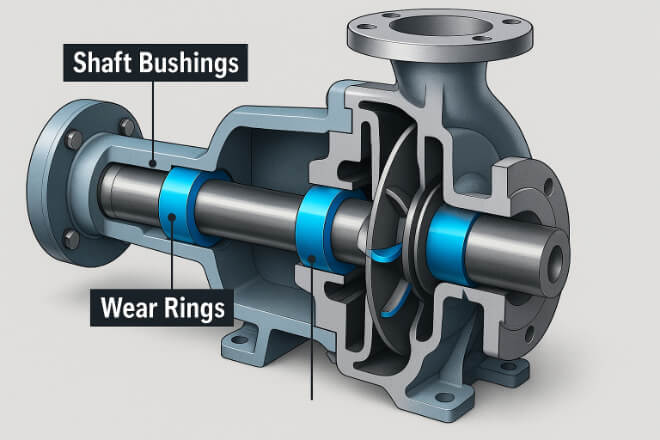
Centrifugal pumps are widely used in water systems, petrochemical plants, and power generation.
Their shafts rotate at high speed, often above 3,000 RPM, creating significant friction and heat at bearing surfaces.
Tungsten carbide bushings in centrifugal pumps serve as:
Journal bearings: Supporting the shaft to maintain alignment
Thrust sleeves: Absorbing axial loads from impeller rotation
Wear rings: Controlling clearance between impeller and casing
Because of their hard surface and low thermal expansion, carbide bushings maintain tight tolerances and prevent metal-to-metal contact — a common source of wear in conventional materials.
Applications in Screw and Rotary Compressors
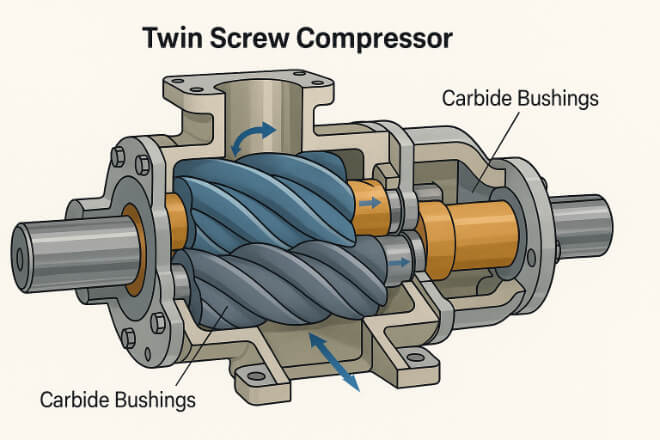
In rotary and screw compressors, the rotors or screws run at extremely high speeds under high internal pressure.
Any deformation or wear in the bushings can immediately affect sealing and compression efficiency.
Tungsten carbide bushings are used in:
Rotor support bearings
Timing gear bushings
Thrust ends and balance sleeves
그만큼 경도 of carbide prevents wear caused by oil film breakdown, while its high stiffness ensures accurate rotor positioning.
This results in lower leakage, less vibration, and longer compressor life.
Applications in Multiphase and Slurry Pumps
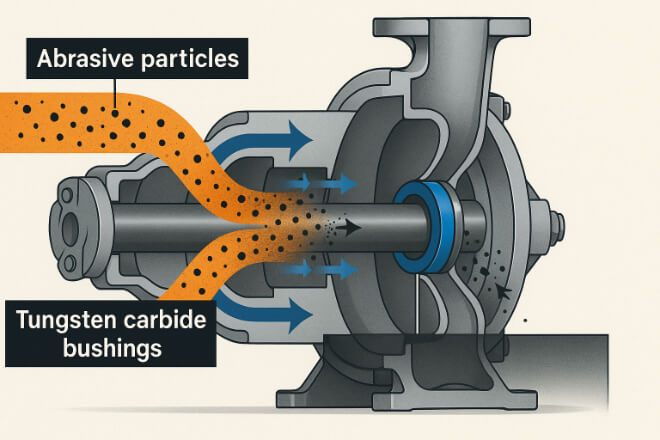
When handling slurry, mud, or multiphase mixtures, pumps face both abrasive and corrosive challenges.
Particles in the fluid act like sandpaper, eroding metal surfaces over time.
Nickel-bonded tungsten carbide bushings resist these conditions because they combine hardness with corrosion protection.
They are commonly used in:
Submersible slurry pumps
Dredge and mining pumps
Tailings transfer systems
These bushings maintain smooth surfaces, reducing friction and maintaining performance even when exposed to sand, silt, or chemical residues.
Applications in Cryogenic and LNG Compressors
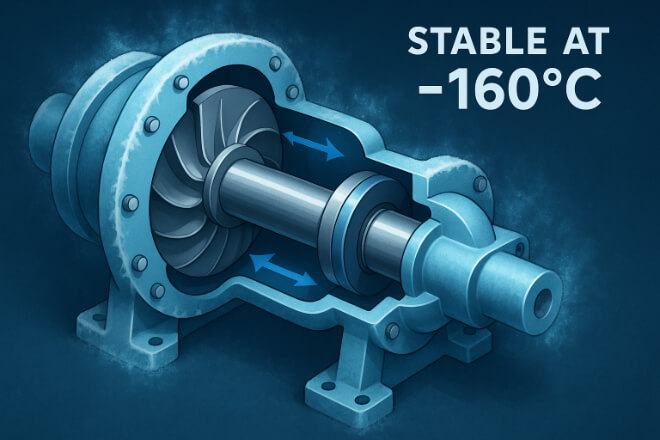
In cryogenic systems and LNG (liquefied natural gas) compressors, temperatures can drop below -160°C.
At such low temperatures, many metals become brittle — but tungsten carbide remains dimensionally stable and strong.
Carbide bushings ensure that shaft alignment remains accurate even under extreme cold and pressure.
They are widely used in:
Cryogenic turbo expanders
Boil-off gas compressors
Refrigeration compressors for LNG terminals
The material’s resistance to thermal shock and low expansion rate makes it perfect for cold duty applications.
Binder Selection for Specific Applications
| 바인더 유형 | 장점 | Best Application Area |
|---|---|---|
| 코발트(Co) | High toughness, excellent wear resistance | Oilfield, refinery, and general industrial pumps |
| 니켈(Ni) | Better corrosion and chemical stability | Chemical and marine compressors |
Selecting the correct binder ensures both mechanical strength and 내식성 for the intended application.
Common Failure Modes and How Carbide Solves Them
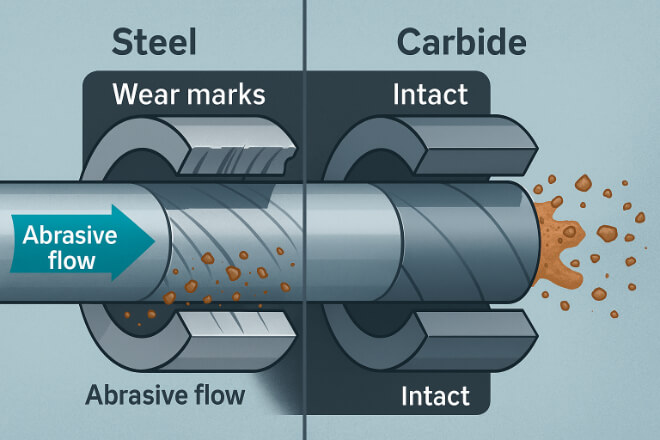
Traditional materials like bronze or hardened steel fail quickly in harsh environments due to wear, galling, or corrosion.
Tungsten carbide solves these problems through its hardness and chemical stability.
Common issues solved by carbide bushings:
Erosion from high-velocity particles
Misalignment wear due to shaft deflection
Thermal fatigue from temperature variation
Cavitation damage in liquid flow regions
Using carbide bushings reduces the frequency of part replacements and minimizes downtime — a key benefit for operators running continuous processes.
Cost and Life-Cycle Considerations
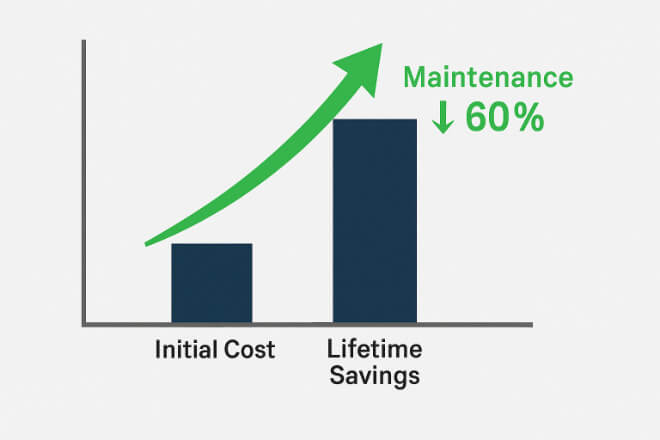
Although tungsten carbide bushings are more expensive upfront than bronze or steel, their total cost of ownership is significantly lower.
They last several times longer, require fewer replacements, and reduce shutdowns.
In critical systems such as offshore compressors or refinery pumps, this translates to substantial savings.
Example:
A chemical process pump that replaces steel bushings every 6 months can extend service intervals to 2–3 years with tungsten carbide, cutting maintenance costs by up to 60%.
가장 많은 혜택을 받는 산업
| 산업 | Typical Equipment | Performance Benefit |
|---|---|---|
| 석유 및 가스 | Multiphase and booster pumps | High wear and pressure resistance |
| 화학 처리 | Centrifugal and metering pumps | Corrosion protection |
| Power Generation | Boiler feed and condensate pumps | Dimensional stability under heat |
| Marine | Cooling and ballast systems | Corrosion and cavitation resistance |
결론
In pumps and compressors, tungsten carbide bushings are more than just mechanical components — they are the backbone of efficiency and reliability.
Their unique combination of hardness, strength, corrosion resistance, and precision helps operators minimize downtime, reduce energy loss, and achieve longer equipment life.
Whether in oil refineries, LNG plants, or chemical process systems, investing in tungsten carbide bushings ensures performance and protection for the most demanding applications.
회사에 대한 자세한 내용을 알고 싶으시면 언제든지 문의해 주세요. 문의하기.
